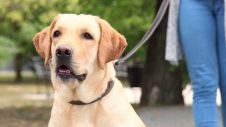
An often overlooked problem for our pets is the dangers of grass seeds. Grass seeds commonly migrate under the skin and burrow their way between a pet’s toes, in their ears, nostrils, and eyes causing infection, pain, and tissue damage.
Locating a grass seed on a pet can be difficult, especially if it has made its way under the skin. Depending on how deep the grass seed has burrowed, your pet may require sedation or an anaesthetic to successfully remove it.
Signs of embedded grass seeds
Pets may react differently depending upon the location and size of the seed.
Hair – If large seeds are in the hair behind the ears of a dog, there may be no sign of a problem other than matting.
Ear – A seed in the ear canal may cause your pet to shake their head, scratch at the ear, rub their ear on the floor, or tilt their head.
Eye – A seed between the eye and the eyelid may cause the eye to become red and inflamed, sometimes with discharge or tears. An ulcer of the cornea could result and possibly lead to vision loss.
Nose – A seed in the nose may cause your pet to sneeze, paw at their nose, and may result in some nasal discharge.
Skin – A pet may chew at an area where seeds have become attached to the skin, and as a result, the seed may burrow deeper or become attached the inside of your pet’s mouth.
What can I do to protect my pet?
Pets that spend more time outside, especially those living on acreage or farmland, are at most risk. Unfortunately, there is no simple way to protect your pet against grass seeds, but keeping their coat short and minimising their adventures in long, dry grassy areas will help.
If your pet does happen to frolic on lawns or parklands where seeded grass is present, physically check them over by running your fingers through their fur and checking in between the toes, inside the ears, mouth, and eyes.
If you suspect that your pet is having a problem due to a grass seed, contact your local Greencross Vets before a severe problem develops.

 Greencross Vets
Greencross Vets 






